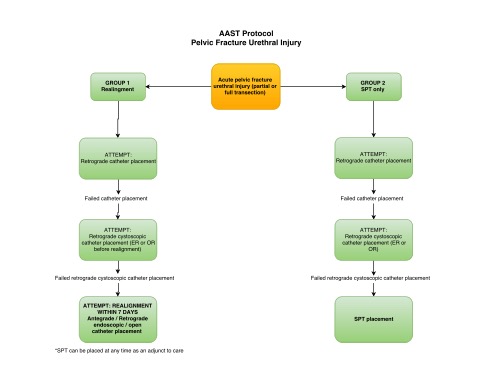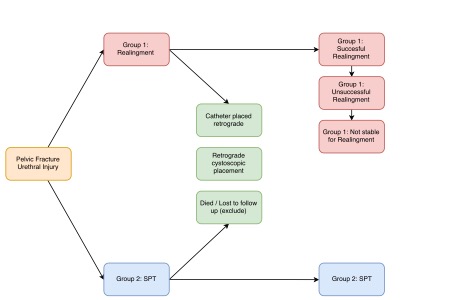TURNS in conjunction with the American Association for the Surgery of Trauma, Multi-Center Trials Committee, has initiated 2 separate studies in genitourinary trauma outcomes.
The first study began to accrue patients in February of 2014 and will end February of 2017. The study looks at the management and outcomes in patients with renal or bladder trauma. This study aims to provide information about how these patients are currently being diagnosed and managed in the acute trauma setting. The goal of the study is to define current practice trends in the United States, which is the first step to developing meaningful prospective studies in GU trauma. The specific aims of the study are the following:
Our hope is to include data from > 300 renal and > 100 bladder injuries in the study. More information can be found at - http://www.aast.org/Research/MultiInstitutionalStudies.aspx.
The aim of this study is to determine if urethral realignment after pelvic fracture urethral injury (PFUI) decreases the rate of subsequent urethral obstruction and need for delayed urethroplasty. The study will prospectively compare two protocols for managing PFUI. We anticipate the study will run for 3 years and accrue about 100 patients with a complete urethral injury. The study began to enroll centers January 2016, and the study should run through January 2019. Power calculations reveal that a 15% treatment effect can be detected with this number of patients. Prospective studies on trauma management are difficult to conduct and we hope this study will serve as a model for future trials in the diagnosis and management of renal and bladder trauma. The PFUI study is open to trauma centers with a dedicated urologist with interest and expertise in urethral trauma. Further information about the PFUI study can be found at http://www.aast.org/Research/MultiInstitutionalStudies.aspx


Interested investigators can contact primary investigator - Jeremy B. Myers, MD, at jeremybmyers@gmail.com to get further information. Both studies are open to trauma centers that are interested in participating independent of any association with TURNS or the AAST.